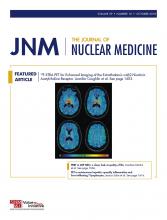REPLY: We appreciate the comment by Trotta and colleagues (1) on our recent study (2). Their results contribute to the developing field of metabolic connectivity imaging (3). Specifically, Trotta et al. applied a seed-based functional connectivity (sbFC) analysis of 18F-FDG PET data with seeds placed in key regions of the known functional MRI (fMRI)–derived resting-state networks (RSNs). Undoubtedly, along with independent component analysis (ICA) the sbFC analysis is a useful way of exploring RSNs in PET data. Of note, in ICA tested results use standard statistical inference approaches, so they are not really arbitrary as mentioned by the authors (1). In addition, each network is represented as a single loading parameter, so the number of tests/comparisons is much lower compared with the sbFC analysis, which requires a test at every voxel. Given the format of the letter, details on this analysis such as size and choice of the seed location are not reported (1). We think, however, that caution should be taken when examining RSNs in PET data using seeds derived from fMRI-based networks. In particular, as shown in fMRI studies, minor changes in the seed location or size result in spatially varying functional maps (4). This limitation is expected to be even more critical for a cross-modality approach. For example, parietal clusters of the default mode network are localized in 18F-FDG PET data more superiorly than in fMRI data, both according to Figure 1 in Trotta et al. (1) and to our experience (5). So far, data on spatial similarity between peak regions/coordinates within RSNs derived from fMRI and 18F-FDG PET data in the same subjects are missing. Furthermore, the colleagues raise an important issue of the sample size (1). Namely, they could detect more RSNs with more study subjects. In line with this observation and in comparison to Savio et al. (2), we did identify the salience network in another study with a larger group of subjects (unpublished data). The impact of the sample size on the network detectability should be systematically addressed by future studies.
To facilitate the contribution of PET in understanding principles of brain connectivity, we propose to develop an atlas of RSNs on the basis of a large 18F-FDG PET dataset, similar to Allen et al. (6). Such PET-based templates of RSNs may be also of value in characterizing disease-specific alterations at the metabolic network level.
Footnotes
Published online Aug. 2, 2018.
- © 2018 by the Society of Nuclear Medicine and Molecular Imaging.







